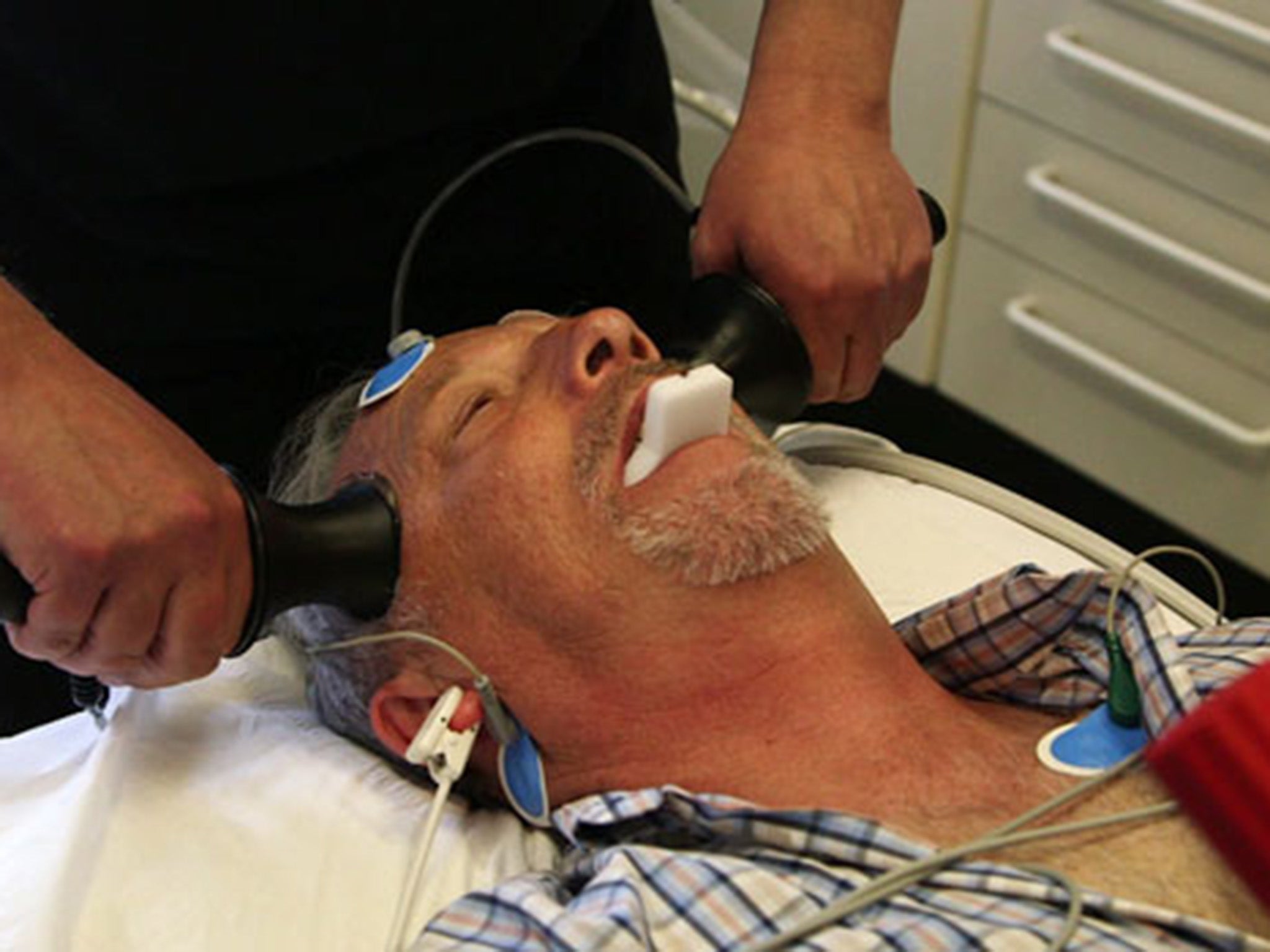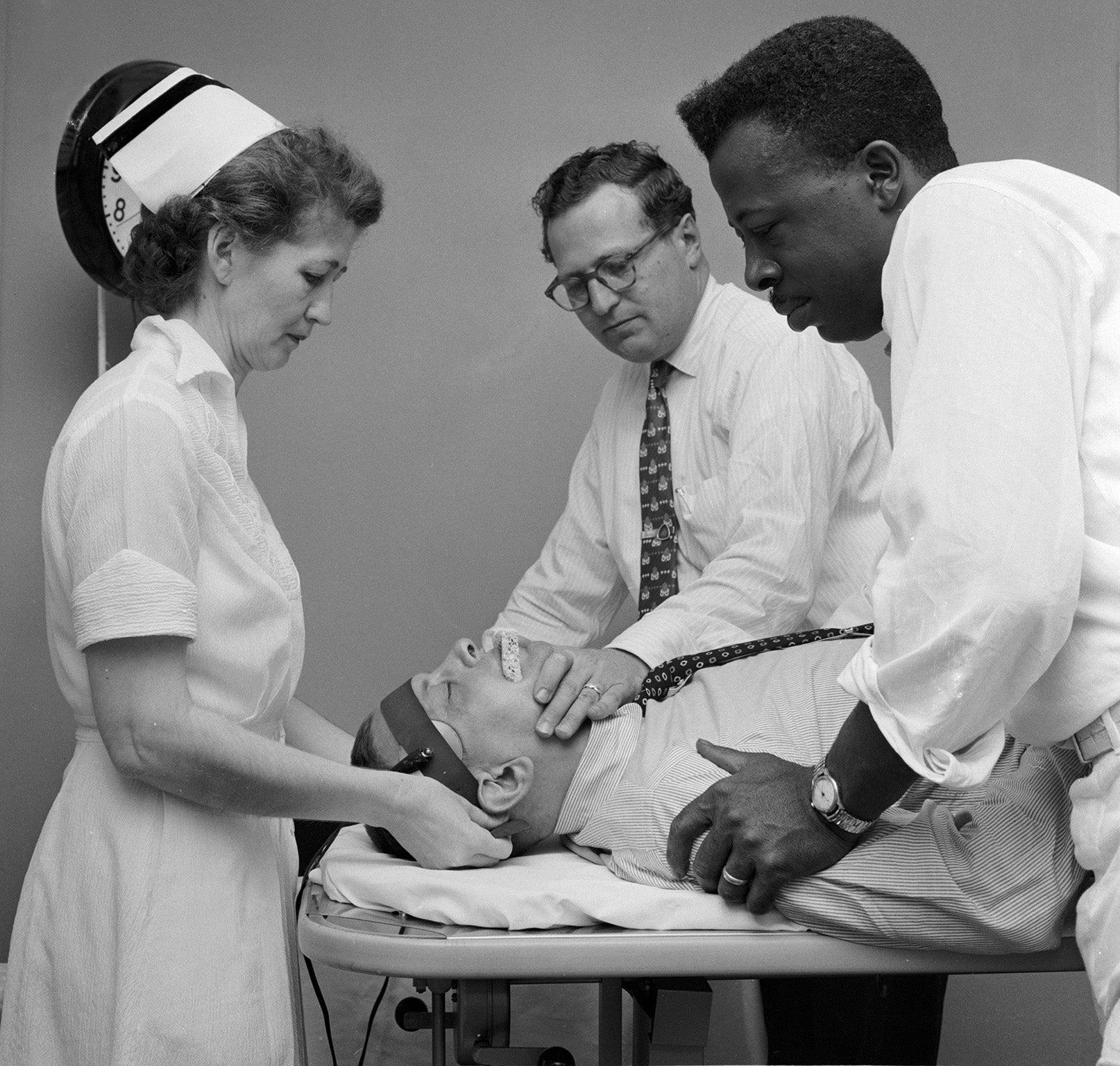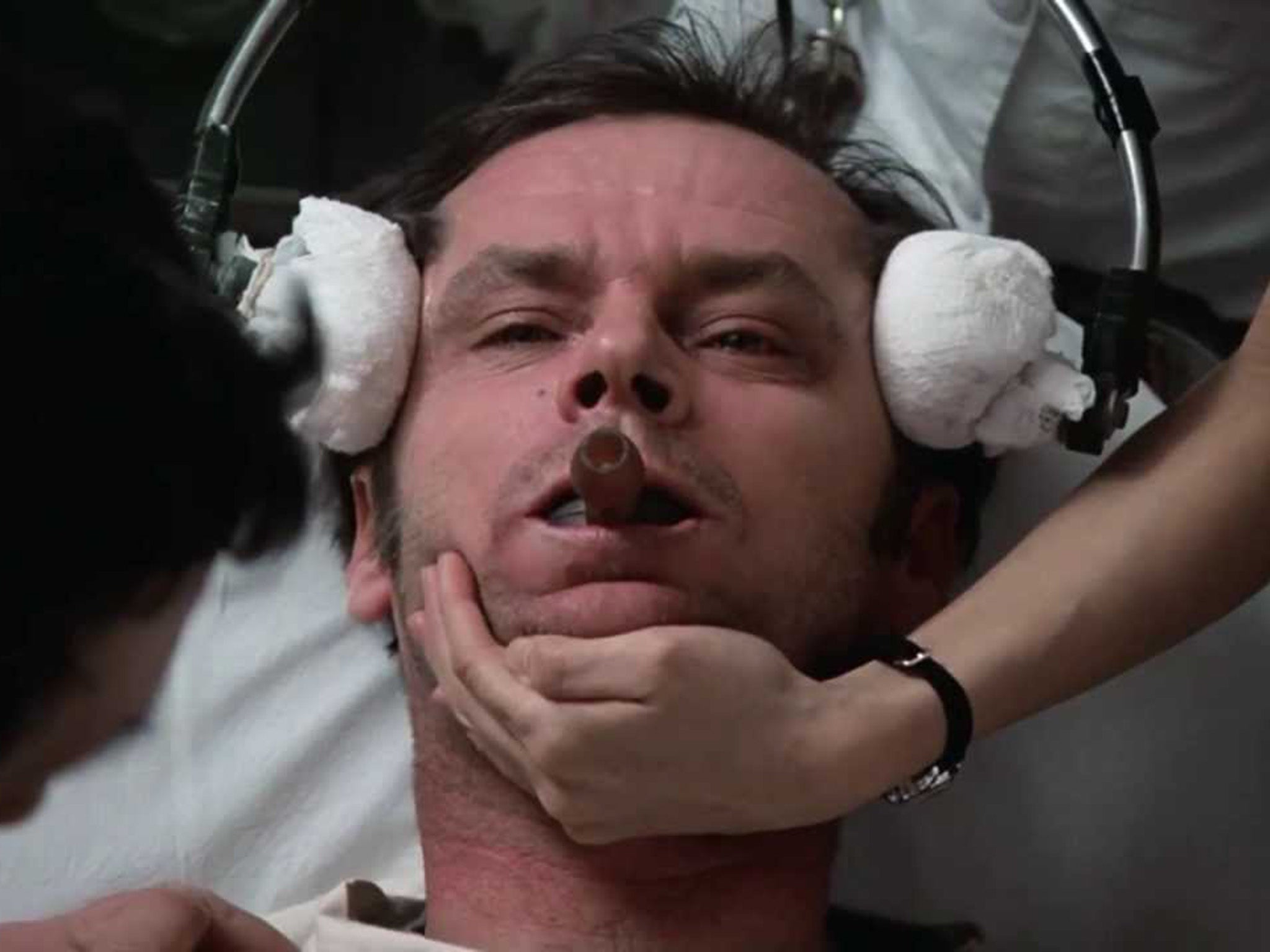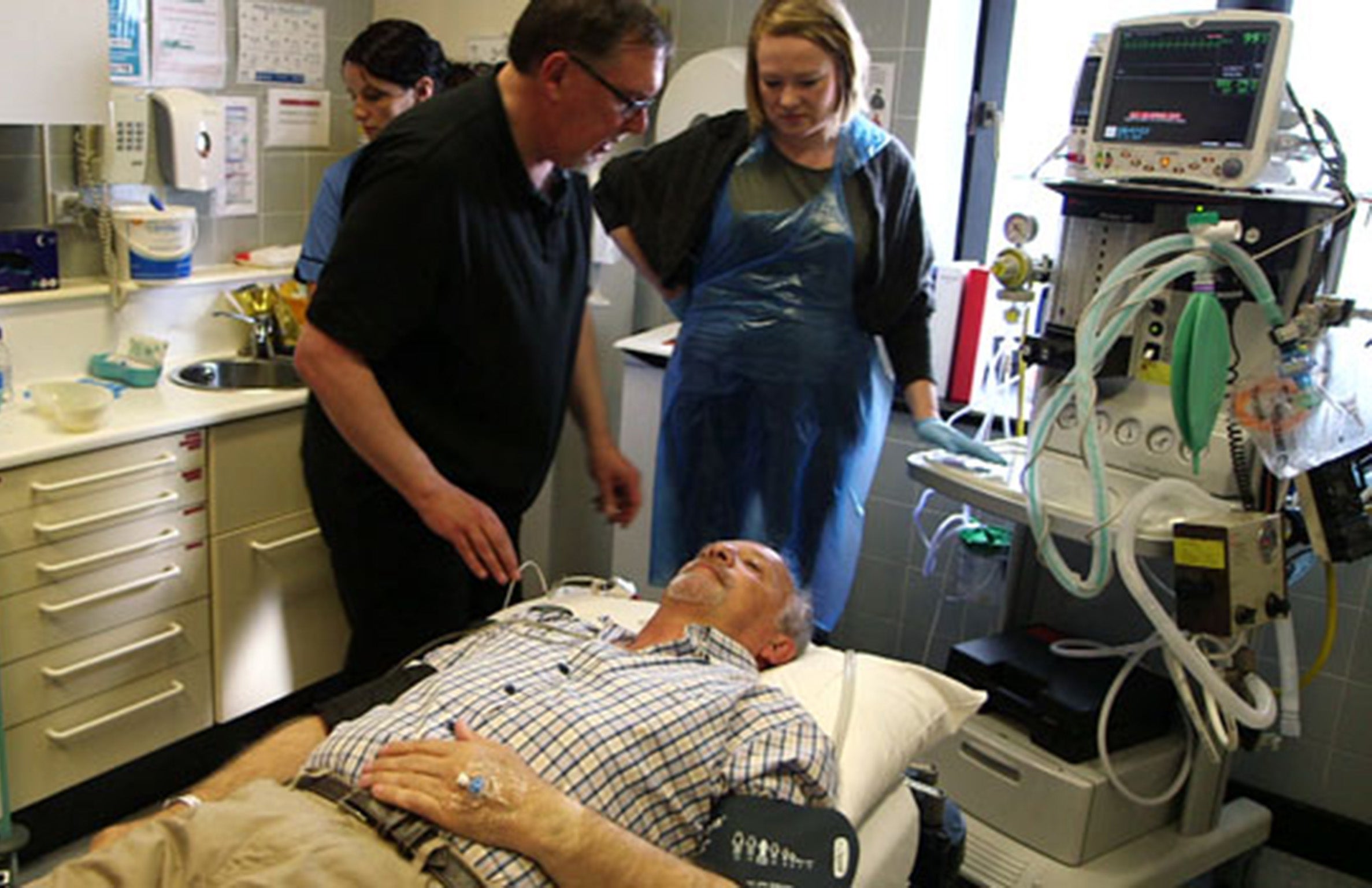Electroconvulsive therapy is still being used today – with mixed results
One of the most controversial treatments is making a comeback in England, with the number of people seeking electroconvulsive therapy on the rise. But is it really worth the risk? Robyn Wilson reports

One early morning in April 1938, a team of Italian medical researchers readied themselves to do one of the most controversial things that medicine had ever seen. Tucked away on the first floor of a medical clinic in Rome, they would attempt to heal a mentally ill patient by applying a jolt of electricity through his brain. They did not know if he would live or die but it was a risk they were willing to take.
Leading the team was 61-year-old Ugo Cerletti, a bushy-eyebrowed and serious-looking neurologist from the small northern Italian town of Conegliano. His fresh-faced assistant, Lucio Bini, joined him. Together they had been working on the intriguing new medical machine they were soon to put to use.
Their patient was a 40-year-old schizophrenic man, who had been found wandering the streets of Rome several weeks before. His identity was unknown and he was unable to communicate. “He often expressed himself in a jargon of his own invention”, Ferdinando Accornero, a medical researcher present at the time, later described. Doctors had little hope for his future. He was ideal for the trial.
In a large but secluded room they shaved the patient’s head and stretched him out on to a bed. He seemed indifferent as wires and equipment surrounded him. They attached two electrodes to his temples, placed a rubber tube in his mouth as a bite-bloc and flicked the switch of Cerletti and Bini’s device. The team braced themselves as the electrical current coursed through the man’s head. He let out a small spasm and then bizarrely burst into animated song. Interesting, amusing certainly, but it wasn’t a seizure.
They tried again, increasing the voltage, until finally the patient went into what was a rather dramatic convulsion: Face purple, mouth clenched, fists balled, heart racing. The medical staff all nervously watched on, fearing his death – their foreheads damp with sweat. Until suddenly the man slumped back, still. His breathing was steady, regular.
At that moment, they knew they had completed what they had set out to do. After two years of research, they had proven that an electrical current could be used to induce a seizure without it resulting in the patient’s death; a seizure that, as they had hoped, would go on to relieve the patient of his symptoms. They had just given birth to electroshock therapy and psychiatric medicine would never be the same again.

***
The idea of using seizures as a way of relieving people of their symptoms of mental illness had been around for sometime before Cerletti’s gripping trial. In 1934, doctors had observed the positive effects that natural fits had on schizophrenic patients who were also suffers of epilepsy but it wasn’t until four years later that Cerletti introduced electricity into the equation.
There was no (and still isn’t) one, concrete explantation for how it worked – rather several scientific theories. Still, after Cerletti’s experiment proved successful, it didn’t take long for electroshock therapy – or electroconvulsive therapy [ECT], as it is now known – to spread across the world, reaching the UK the following year in 1939. This made sense, it came at a time when few other psychological treatments were available and it’s success rate was impressive.
There was, however, a glitch. Back when Cerletti and his team readied their 40-year-old schizophrenic patient for their groundbreaking experiment, they omitted a few important medical ingredients: anaesthesia and muscle relaxant. Completely wide awake, the patient felt the painful jolt of the electrical current race through his head and, without muscle relaxant, experienced the full force of that powerful and potentially dangerous convulsion. However beneficial the treatment was for the patient, the ordeal was as equally agonising.
It was this early and somewhat disturbing form of the treatment that took the world by storm back in the Forties and lasted for decades to come. Known as “unmodified” ECT, it was not uncommon for bones and ligaments to break or be damaged – particularly in older patients – but it’s problems didn’t stop there.
In August 1959, the colonel in charge of a psychiatric unit in Fitzsimmons Army Hospital outside Denver, misused this treatment to unthinkable levels. Soldiers needing admission as inpatients into this ward, would first need to undergo an extremely high amount of unmodified ECT sessions. Professor Alan Stone, who was working there at the time, later recalled in a memoir how around 100 previously physically fit soldiers were left incontinent because of the sessions, while others were unable to feed themselves.
In England around the same time, things weren’t any better. ECT was being used as a “treatment” for homosexuality on boys as young as 13 years of age. Each unnecessary session lasted around 30 minutes, with some participants even taking home portable electric shock boxes to use by themselves when aroused by members of the same sex, according to a BMJ medical research paper.
Further stories like these started to sour people against Cerletti’s initial discovery and critics began to surface. By the Sixties, an anti-psychiatry movement had started to sweep over the UK and US and a fierce campaign led by the Church for Scientologists came out against the use of psychological treatments, including ECT. Powerful cultural depictions of the therapy began to gain traction, starting with the publication of Ken Kesey’s novel One Flew Over the Cuckoo’s Nest in 1962.

The year before, Kesey had enrolled in an army-sponsored hallucinogenic-drug experiment run by Stanford University scientists at a hospital in California’s Menlo Park. It was here, whilst experiencing psychedelic trials, where Kesey started working as a night aide on the hospital’s psychiatric ward and eventually went on to write the book, which was a vivid and stark depiction of a mental health institution.
Later in 1963, Sylvia Plath’s semi-autobiographical novel, The Bell Jar, came out. Her fans read in horror as the book’s main character Esther Greenwood – Plath’s fictional persona – recounts a grisly scene in which she receives a painful session of unmodified ECT. Esther describes how with “each flash a great jolt drubbed me till I thought my bones would break and the sap fly out of me like a split plant”. She later ponders “what terrible thing it was that I had done.”
It was difficult to separate Esther’s fictional world and experience of the treatment from that of Plath’s own, as it became public knowledge that Plath too was given unmodified ECT. Amid this, further real life stories continued. On 27 February, 1967, in a hospital in Beaumont Texas, Ruth Louise Linder Wagner underwent what would be her last round of electroconvulsive therapy.
She had been receiving the treatment on and off since 1944, at which time she had spiralled into a deep depression after finding out her only son, Martin – a corporal and a side gunner in the Second World War – was missing in action. It had been over 20 years since she had received that tragic news when her depression reared its ugly head once more in 1967. She was 74 years old.
Usually outgoing, Ruth’s manner had become quiet and subdued and she started to lose weight. After exhausting all other medical options, her doctors turned once more to ECT as a last hope. Her husband, Martin Sr – known to the family as ‘Granddaddy Wagner’ – took Ruth to the hospital that day on 27 February for her monthly appointment.
He was in the hospital waiting room when the doctors came out and delivered the terrible news. Ruth had died of a heart attack whilst receiving unmodified ECT. Her grandson would later describe the procedure as a “blunt instrument”, which failed to take into account the physically fragile state in which she was in.
A final tragic chapter to their story happened the following year, on 4 November. Martin Sr got in his 1950s red and white Buick Sedan and, not wanting to inconvenience his family, pulled up outside his local funeral parlour in Beaumont and shot himself in the head. He’d been full of sorrow after his wife’s sudden death.
Many years later, in 1975 the full force of the anti-psychiatry movement began to truly touch the public consciousness with Miloš Forman’s film adaptation of Kesey’s novel One Flew of the Cuckoo’s Nest.
In one of the most haunting portrayals of a medical treatment ever depicted in Hollywood, the film’s main character “RP McMurphy”, played by Jack Nicholson, receives unmodified ECT as a punishment.
Health news in pictures
Show all 40The doctor’s voice is emotionless as he sends a jolt of electricity through McMurphy’s head. “This won’t hurt and it’ll be over in just a moment,” the doctor says before turning up the dial on the machine next to McMurphy, sending him into a violent and agonizing fit. In the following decade, between 1979 and 1989 in England, ECT’s use dropped by about a third to 109,797 treatments, according to a study by consultant psychiatrist John Pippard.
***
Many people are surprised to hear that ECT is still in use today and they’ll often cite these cultural depictions as a reason for why it should no longer be in existence. However, ECT is no longer administered unmodified – without anaesthesia or muscle relaxants. In fact, the procedure itself is rather anti-climactic. It’s benefits too are impressive, with a success rate of between 60 per cent-90 per cent in severely depressed patients, according to the International Society for ECT and Neurostimulation.
Perhaps this is why it could be on the rise again in England, with a recent Guardian report showing an 11 per cent increase in ECT treatments in 2015-16 from four years ago, when around 20,400 were carried out. Previously an unmodified and gruelling procedure, ECT today is a far cry from the treatment it once was. But that’s not say it’s without controversy.
At least a third of patients report significant memory loss after ECT, according to a 2003 Institute of Psychiatry study by Kings College London professor Diana Rose. For patients like Elle Smith, who received ECT when she was 26 years old, the memory loss was so bad she couldn’t even recognise her own things. “It was like a whole new wardrobe had been placed in my bedroom and I was wearing someone else’s clothes,” she explains.
Her illness reached a tipping point in 2015, just as she was beginning her PhD in Oxford. As someone who is autistic, daily life had never been easy for her but things started to worsen after an incredibly traumatic and random event during which a stranger tried to strangle her in the street. Initially, she struggled with anxiety but that soon escalated to depression. The medication she was on wasn’t working. Desperately in search for cure, she read self-help books and therapy guides from cover to cover.
It was here, at a point of severe desperation, that Elle (who asked for her name to be changed) attempted suicide and was rushed to hospital. After a few days on a medical ward, she was transferred to psychiatric unit. “I felt numb and broken. I couldn’t eat or drink, I couldn’t move, I could barely talk, all I wanted to do was lie there on my uncomfortable hospital bed, and sleep,” she recalls. “Eventually, it became quite dangerous because I wasn’t drinking and became quite dehydrated.” Still, Elle refused ECT.
“Having an electric current whooshing through your brain sounded very dramatic,” she reasons. “Being put to sleep for the procedure means that you feel you have no control over what’s happening to you and you don’t really understand what happens when you’re asleep or what they do.”
At this point, her psychiatrist asked for an independent medical opinion about whether ECT was required and eventually some section papers were signed for ECT to be given without Elle’s consent. She had 20 sessions in total – towards the highest amount given, with most patients needing between 6 to 12 before feeling the benefits. “The confusion was intense,” she says, describing her immediate state following the ECT. “I didn’t know if I was coming or going. I was just lost in a bubble of time without a past or a future.”
The confusion passed but her severe memory loss remained. “About 3 years preceding the ECT was gone completely,” she says, as she explains how, once better, she had to start her complex PhD from scratch. The following year, however, in the seaside town of Hove, Danika McElroy underwent a very different experience. She was 25 at the time and was going through a severe depressive episode. With growing suicidal thoughts, Danika’s life was deemed at risk and it became necessary for her to be put on suicide watch 24 hours of the day.
Similarly to Elle, medication and talk therapy had failed to change Danika’s mood. “I was so cognitively impaired, I couldn’t rationalise things, I couldn’t have felt much lower than I did,” she says. In two minds about the treatment, she spoke to other patients on her ward, who had positive experiences to share and eventually she agreed to having it. She had 6 ECT sessions overall.

Danika casually likens the treatment to “having an appointment at the doctors”, as she recalls how an ambulance would come and collect her from the acute hospital in which she was being treated, to drive her 45 minutes to a nearby ECT clinic.
By no means unaffected by the ECT (experiencing memory loss and a “dampening” on her cognitive ability) she feels the benefits outweigh the risks. “It takes me a little longer to process complex things but I wouldn’t say I’ve been robbed of anything.”
Just like any treatment for a severe illness, such as chemotherapy for cancer, ECT has side effects, but considering the alternative of potential suicide, perhaps it’s worth the risk? For those who sit on the other side of the fence like Elle, however, there are too many unknowns about ECT and she raises some valid questions around identity.
Did her depression lift because of the ECT or because she lost her sense of self and knowledge of how she was feeling beforehand? She ponders. “I feel detached from my former self, like a new person born again as an adult and thrown into a chaotic world.”
These powerful and contrasting experiences, which can be found all over the world, will continue to draw controversy to the treatment for years to come. Because in many ways it is still very much the medical mystery it was on the day of its creation, all those years ago in a clinic in Rome.
Subscribe to Independent Premium to bookmark this article
Want to bookmark your favourite articles and stories to read or reference later? Start your Independent Premium subscription today.

Join our commenting forum
Join thought-provoking conversations, follow other Independent readers and see their replies
Comments